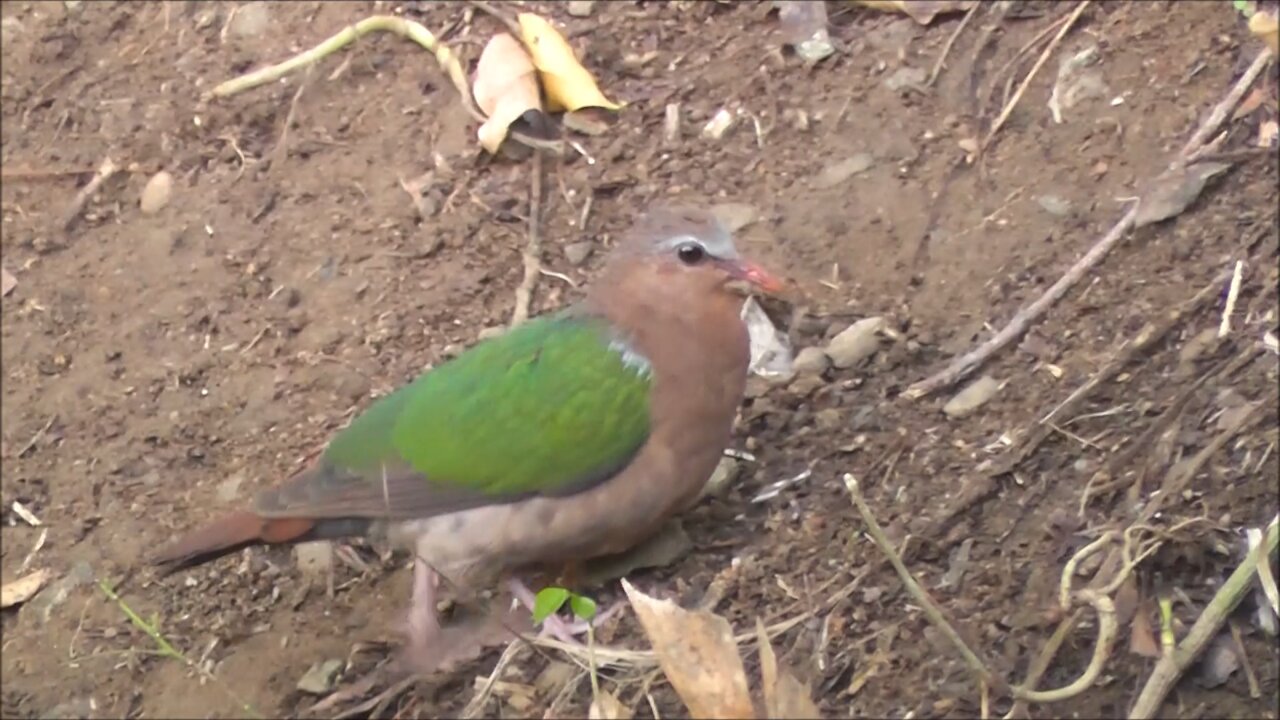Premium Only Content

The Emerald Dove, RELAX your Mind
sugar store link
https://www.digistore24.com/redir/307885/JWhelpdesk
The Emerald Dove
The normal emerald dove (Chalcophaps indica), likewise called Asian emerald bird and dark covered emerald dove, is a broad inhabitant reproducing pigeon local to the tropical and subtropical pieces of the Indian Subcontinent and Southeast Asia. The bird is likewise known by the names of green bird and green-winged pigeon. The normal emerald dove is the state bird of the Indian province of Tamil Nadu. The Pacific emerald pigeon and Stephan's emerald dove were both viewed as conspecific.
In 1743 the English naturalist George Edwards incorporated an image and a depiction of the normal emerald dove in his A Natural History of Uncommon Birds. He utilized the English name "Green Wing'd Dove". His drawing was produced using a live bird at the home a dealer in Rotherhithe close to London. Edwards was informed that the bird had come from the East Indies.[2] When in 1758 the Swedish naturalist Carl Linnaeus refreshed his Systema Naturae for the 10th release, he set the normal emerald dove with the wide range of various pigeons in the sort Columba. Linnaeus incorporated a concise portrayal, authored the binomial name Columba indica and refered to Edwards' work.[3] The particular sobriquet indica is Latin for "Indian" and is utilized by Linnaeus to mean the East Indies.[4] The species is currently positioned in the family Chalcophaps that was presented by the English ornithologist John Gould in 1843.[5][6]
Emerald pigeons normally happen separately, sets or in little gatherings. They are very earthly, regularly looking for fallen organic product on the ground and investing little energy in trees with the exception of while perching. They eat seeds and products of a wide assortment of plants and are for the most part manageable and congenial. Its flight is quick and direct, with the standard beats and a periodic sharp flick of the wings which are normal for pigeons by and large. It regularly flies low between the patches of thick backwoods it likes, however when upset will often leave instead of fly. They are especially acceptable weavers when flying through woodlands. When flying they uncover a buff underwing and a chestnut shade of their flight feathers.
The call is a low delicate groaning cooing comprising of around six to seven coos beginning discreetly and rising. They additionally call a nasal "hoo-hoo-hoon". Guys play out a swaying dance during romance.
-
 LIVE
LIVE
The Quartering
2 hours agoTrump's Huge Tariff Win, Bimbos In Space, Karmelo Anthony RELEASED, Another Trump Assassin!
34,176 watching -
 LIVE
LIVE
Right Side Broadcasting Network
4 hours agoLIVE: President Trump Greets Ohio State National Football Champions at the White House - 4/14/25
3,050 watching -
 LIVE
LIVE
KingB33Gaming
13 hours agoZero Sum Seattle - Tommy is Still Missing | The Last Of Us PT 2 Remastered
366 watching -
 LIVE
LIVE
Dabkillah
1 hour ago🔴LIVE-DABKILLAH MONDAY BLAH HAHAHAH
501 watching -
 1:49:02
1:49:02
Russell Brand
3 hours agoTrump THREATENS China “NOBODY is getting off the hook” As Trade War INTENSIFIES! – SF565
100K32 -
 1:04:26
1:04:26
Sean Unpaved
3 hours agoRory's Masters Glory!, NBA Play-Ins Preview, Tennessee Moving On From Iamaleava?
40.1K -
 9:00
9:00
Film Threat
4 hours agoWARFARE | Film Threat Reviews
1605 -
 1:04:04
1:04:04
Timcast
3 hours agoDemocrat Governor's Home FIREBOMBED, Liberal's Luigi Mangione Effect Driving INCREASE In Violence
188K150 -
 1:57:44
1:57:44
Steven Crowder
6 hours ago🔴 The Most Un-American School Suspension of All Time & The New Worst City in America
406K281 -
 2:05:42
2:05:42
Nerdrotic
7 hours ago $3.82 earnedHarry Potter Casts BLACK Snape | Dr Who Hits New LOW - Nerdrotic Nooner 479
69.9K30